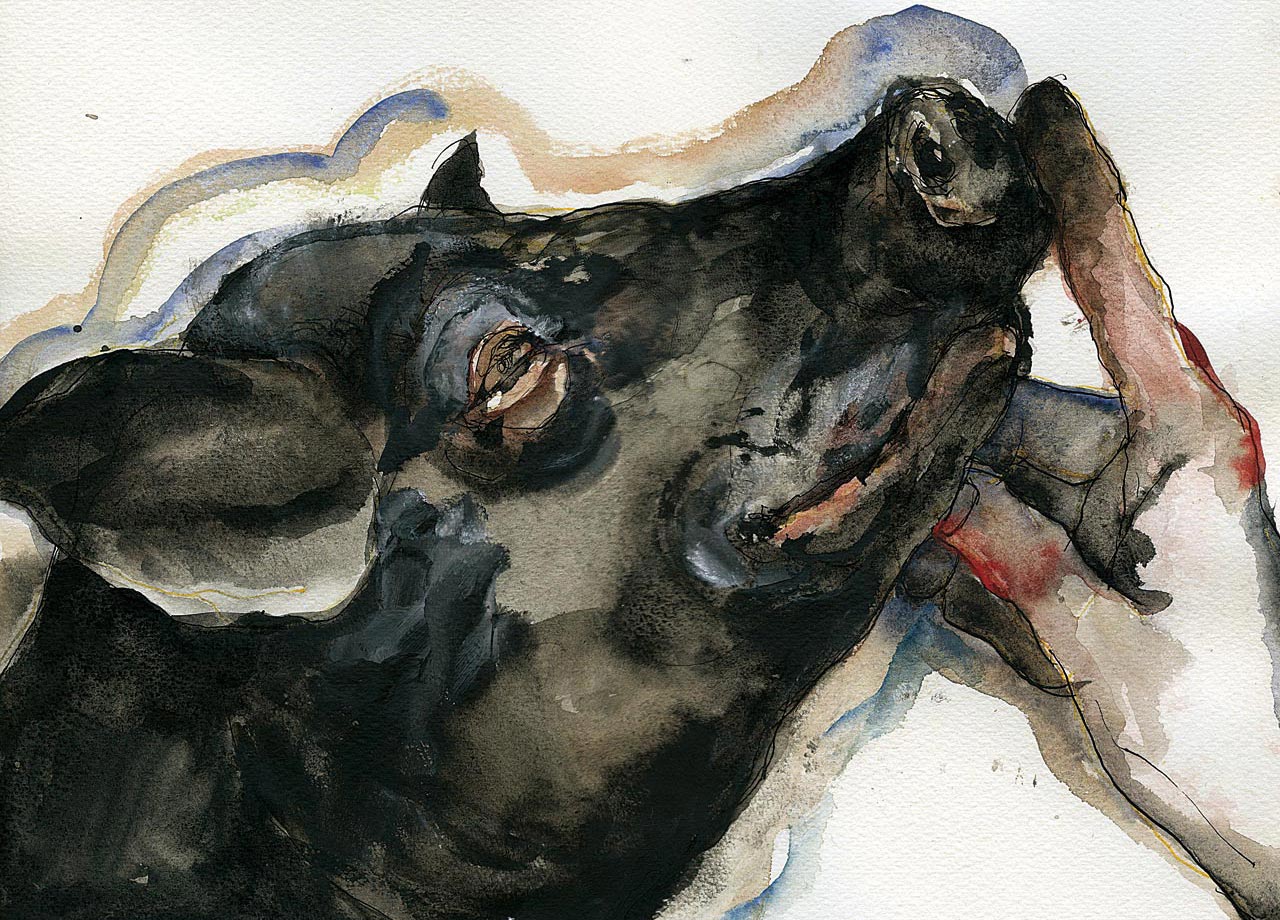(公財)沖縄こどもの国 髙田 勝
動物園は、教育、レクリエーション、研究、自然保護を行う施設とされ、自然認識を発信する役割を持ち、主に野生に棲息する動物を対象として飼育展示をしている。 一方、家畜は、畜産関係の試験場や大学、研究所、畜産農家で飼育、研究され、見学するには牧場や畜産農家に行くことになる。「家畜」は「野生動物」とは異な目的を持ち、現在では効率を考えた改良品種が飼育、研究の対象なのである。
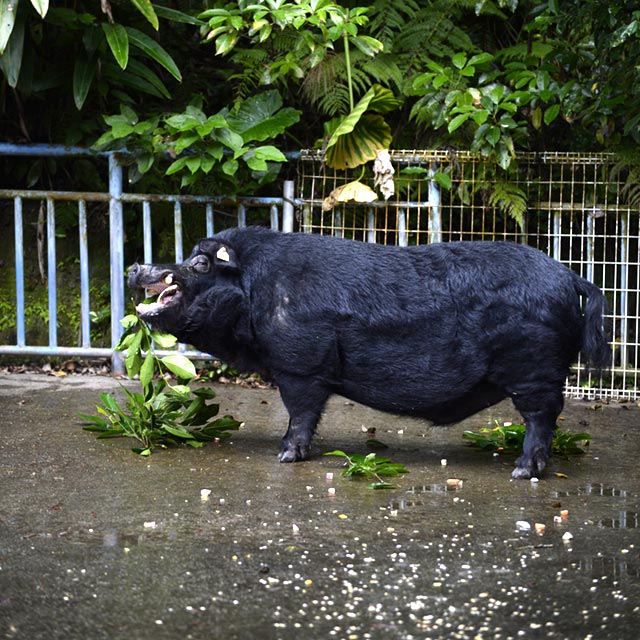
在来家畜と言われる動物はどうであろうか?畜産関係の試験場や大学、研究所では研究対象でない限り経済的に優位性を見つけ出せないと飼育されることはなく、当然、畜産農家で飼育されることも考えにくい。動物飼育を趣味とする人であっても伴侶として、「可愛さ・従順さ・癒し・飼育の容易度」などに優劣があるため、おいそれと在来家畜を飼育するには至らないのは無理からぬことである。たとえその価値が、遺伝資源であっても、文化資源であっても、例えば改良品種の原種でありFAOが家畜の多様性に警鐘をならしていても、それでも飼育されることは稀である。

在来家畜とは「改良品種の交配などの影響を最小限にとどめ、民俗的価値観・宗教観などの文化的要素と、飼育環境・自然環境などの要素から成立した家畜で、地域の生活に根ざした飼育形態を保ちながら生き延びている家畜群」とされる。
肉、乳、卵など畜産物に優れた改良品種の成立は、18世紀後半の産業革命・農業革命において、農業技術の変革と基礎に資本主義化が進行したのが発端となる。世界規模で社会に効率と利便性が求められ、伝統的に役畜や供物として使われてきた在来家畜は、非効率な存在でしかない。必要性を失くした家畜として減少することになり、僻地の地域文化・風習など様々な要因で、ごくわずかな家畜が改良種の影響を受けずに生き残っているに過ぎない。
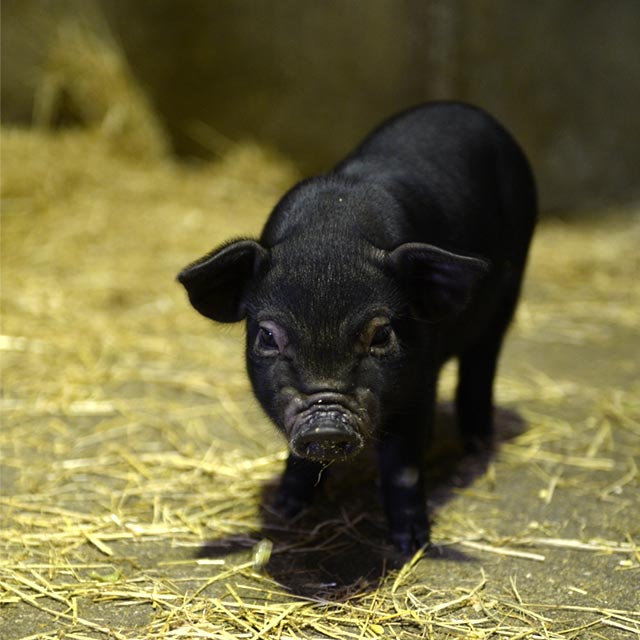
家畜は、人と生活を共にする動物であり、人や社会にとって必要性が失われれば、淘汰の対象でしかない。役畜として長い年月を人と伴に暮らしてきていても生殺与奪はその価値により決定されてしまう。
そんな中で、このような在来家畜を遺伝資源や文化資源として飼育展示し紹介する動物園が数園現れてきた。その中で主軸となり、意思をもって動物の役割を兼ねて飼育を本格的に始めたのが上野動物園である。2004年8月から園長になった小宮輝之氏が鋭い触覚と行動力でペット的なふれあい動物とは異なる意味合いを前提に、精力的に日本の在来家畜を集めた。また、この収集は他園館にも影響を及ぼし、他の動物園でも各地域の在来家畜の重要性を認識し始めたように思われる。
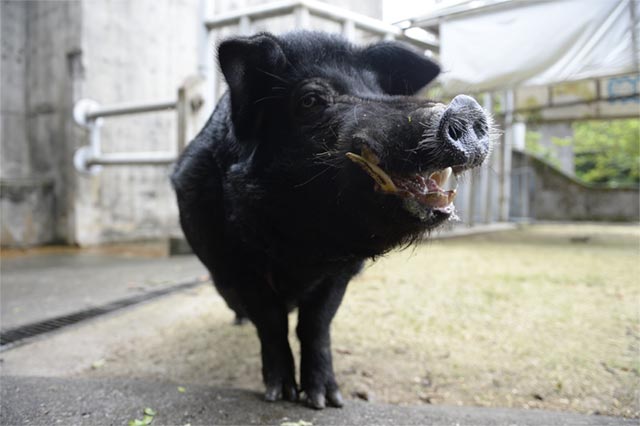
さて、私は沖縄こどもの国の園長を拝任しているが、現役の専業農家でもある。畜産業を営み生活をしているわけだ。幼少の頃から上野動物園を庭の様にして育った品川生まれの東京っ子ながら、家畜家禽に興味があり農業を志し、沖縄に渡って33年になる。
沖縄は風俗習慣として儀礼行事が多く、祝儀・供犠・慰労会・法要などに家畜の肉を利用する。33年前には、サトウキビを畑から道に出す運搬を馬が橇を牽いて働いていたのを感激して見た記憶がある。
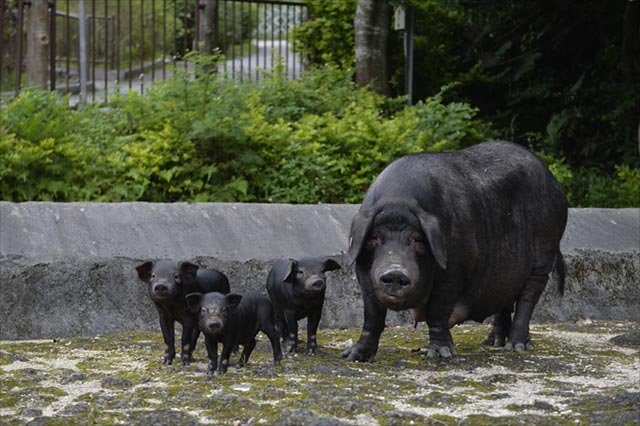
現在の沖縄では、肉利用の習慣のうち、豚と山羊が取り上げられることが多い。豚肉は、正月や清明祭をはじめ定例の儀礼行事に使用されることが多く、山羊肉は臨時的に、家の棟上げ式、合格祝い、当選祝いなど労力を費やした慰労に使われる事が多い。両家畜ともテーブルミートではなく、行事用に使われる家畜であり、成分も異なり行事に合った利用がされてきた。しかし、風習は残っているが、肝心の在来家畜は風前の灯である。儀礼は改良品種の家畜で執り行われ、在来家畜に取って代わっているのである。
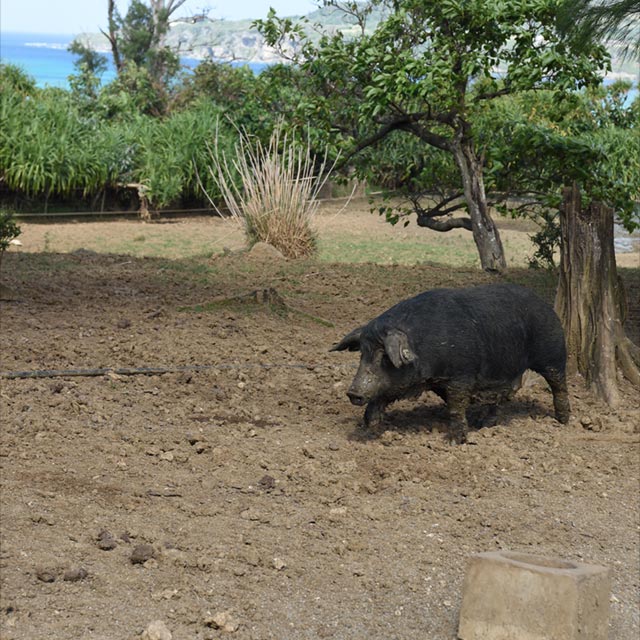
近年、耳にする“アグー豚”と呼ばれる豚は黒い毛色ながら、戦前の在来豚・東アジアの在来豚の生理生態を持ち合わせてはおらず、改良品種が交配された豚が原種豚となっている。ブランド価値を作り上げ、高額で取り引きされる環境が整うと爆発的に飼育頭数が増えた構造だ。「在来」の文言を付加価値の言葉として利用している業者もみうけられるため、消費者はもしかすると貴重で希少だと思って口にしているのかもしれない。経済的価値は、生物的価値や伝統文化的価値を越えてしまうようだ。
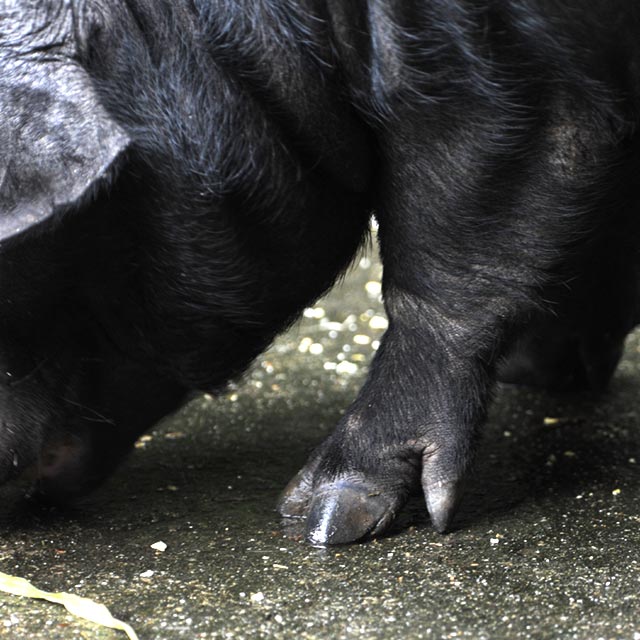
動物園では、交配した家畜をあたかも原種である表記はしないが、ふれあい動物としての利活用はできても、人気動物とは言えない。結果、12年に一度回って来る干支の時期のみの取り扱いに終わってしまいがちである。しかし、動物園は、動物を経済的価値のみで飼育販売する事はなく、文化を含めて地域で成立して来た在来家畜を生産効率とは別の次元で飼育展示、発信できる唯一の施設であり、最後の砦とも言えるのである。利活用のしかたによっては、経済資源や地域資源ともなり得る在来家畜。これをより多くの動物園水族館で飼育展示し続けていただき、日本だけに生き残る家畜動物として維持していかれる未来を願っている。
Zoos and native livestock
Masaru Takada, Okinawa Zoo and Museum
Zoos are facilities which provide education, recreation, study and nature conservation, and make people think of nature, and keep animals which mainly inhabit the wild. Whereas, livestock are raised and kept at experiment stations, universities, laboratories or stock farms and you normally have to visit stock farms to see them. “Livestock” has a different purpose from that of “wild animals”, and now efficient selective breeding is the subject of the study.
How about the animals called native livestock? They are not kept at those places because there’s no economic advantage unless they are the subject of a study, and livestock farmers usually don’t keep them either. Even those who like to keep animals hardly keep native livestock because they are not normally as cute, obedient, healing, or easy to breed as other animals. Furthermore, they can be a genetic and cultural resource and are the ancestor of the most improved varieties, which the Food Agriculture Organization of the United Nations warns the diversity, still the native livestock are rare to be bred.
The native livestock have minimum effects of selective breeding such as crossbreeding, and for their existence, they need the cultural element such as ethnic and religious views and other elements like breeding environment and nature. They now remain because of the breeding style which is rooted on the areas.
Improved varieties for livestock products such as meat, milk and eggs, were established during the Industrial Revolution and the agricultural revolution of the late 18th century. People around the world wanted efficiency and convenience. Traditionally, people used native livestock as draft animals or offerings, and because of their inefficiency and small value, the number declined. Only a few exist now and they survived because they lived in the isolated areas or they weren’t affected by improved breeds for reasons such as regional customs.
Livestock live with people, but if people and society don’t need them anymore, they will be weeded out, even though they have served people for a long time. It depends on their value whether they can survive or not.
There are a few zoos now that keep and exhibit such native livestock as a genetic and cultural treasure. Among them, Ueno Zoological Gardens took the lead and started keeping livestock with the consideration of the animal’s role. Mr. Teruyuki Komiya, who became the director in August, 2004, gathered native livestock with a different perspective from that of petting zoos. This influenced other zoos, and they started seeing the importance of the native livestock in each area.
As for me, besides working as a director of the Okinawa Zoo and Museum, I am a full-time farmer and make a living as a stock farmer. I was born in Shinagawa, Tokyo and I used to visit Ueno Zoo as if it were my garden. I was interested in domestic animals and was determined to be a farmer and moved to Okinawa 33 years ago. I remember my amazement when I saw a horse pulling a sled full of sugar canes back then.
Okinawa has a lot of ceremonies and livestock meats are served in celebration events, sacrifices, appreciation parties, memorial services, and so on.
Now pork and goat meat are mainly served in Okinawa. Pork is normally served in the regular events such as the new year and the Qingming Festival, and goat meat are served in special events like a framework-raising ceremony and a celebration of passing an exam or election. They both are served in the events but not in regular meals. They have a different nutrition and are served in different occasions. Even though the custom remains, the existence of native livestock are hanging by a thread, because now improved varieties are used in those ceremonies instead of the native livestock.
The Agu pork, which we recently hear about, has black hair but doesn’t have the physiology or ecology of the native pig in Eastern Asia. It originated from cross breeding of improved varieties. The population of the Agu pig increased explosively after being established as brand value and having a high price. I see some dealers use the word “native” to add a value, so consumers think that they are valuable and rare. I guess economic value does exceed biological and cultural values.
Zoos can’t display the domestic animals which were cross bred as a pure breed. We could keep them in petting zoos but they are not the most popular animals, so they are only kept for a certain time like the year of those animals in the 12-year Chinese zodiac. Zoos are the only facilities that can keep and exhibit the native livestock not only because of the economical value and production efficiency, but because of their different perspective. The native livestock can be an economical and a local resource depending on how you utilize them. I hope more zoos and aquariums will keep those livestock which only remain in Japan.
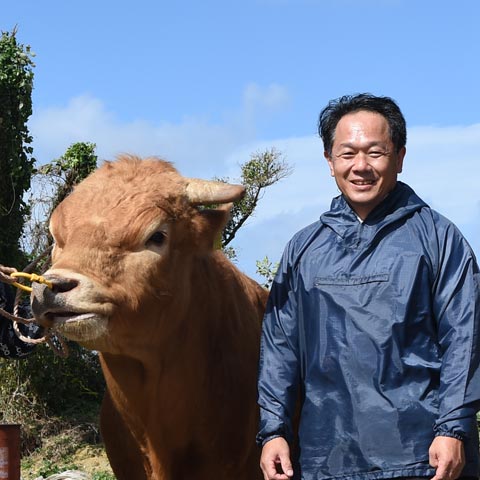
高田 勝(たかだ・まさる)
1960年、東京生まれ。東京農業大学卒業。
(財)進化生物研究所勤務を経て、1984年に沖縄に移住。2012年より沖縄こどもの国施設長、2016年より園長を歴任し現在に至る。モットーは「人を作り、環境を作り、沖縄の未来を作る」。琉球弧の種の保全・保存、沖縄独自の動物園を目標に在来動植物の展示に力を入れている。

